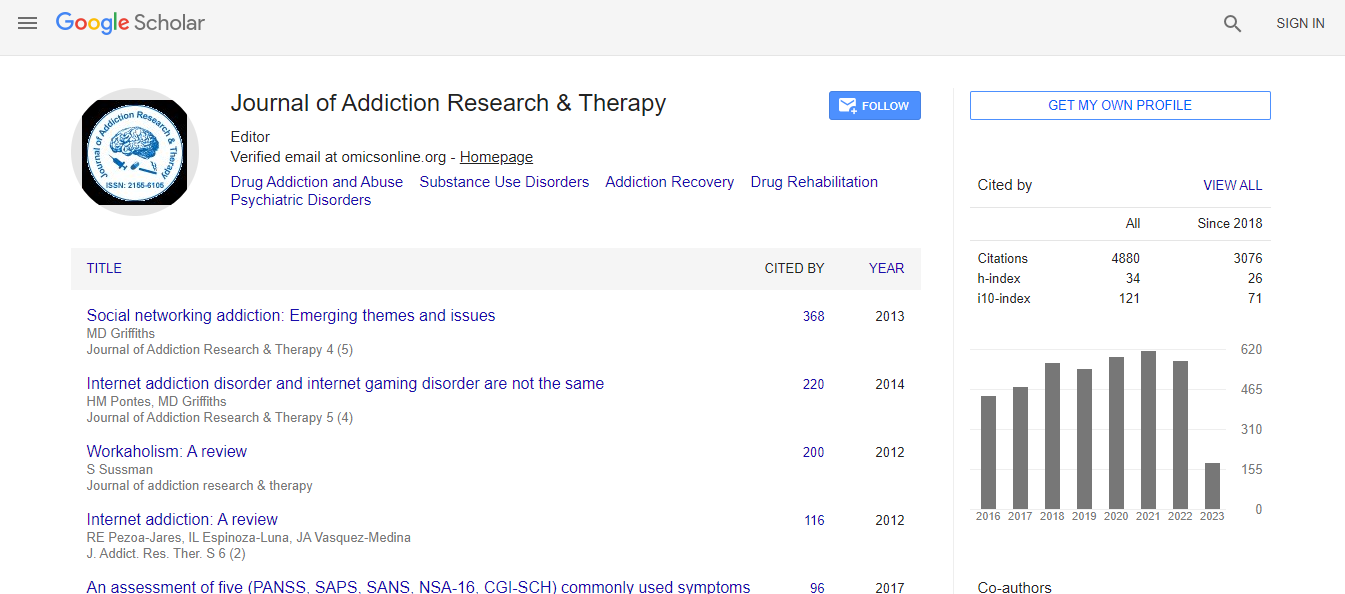Review Article
Investigating Methamphetamine Craving Using the Extinction-Reinstatement Model in the Rat
| Peter R. Kufahl and M. Foster Olive* | |
| Department of Psychology, Arizona State University, Tempe, AZ85287, USA | |
| Corresponding Author : | M. Foster Olive, Ph.D. Department of Psychology, Arizona State University PO Box 871104, Tempe, AZ85287-1104, USA Tel: (480) 727-5550 Fax: (480) 965-8544 E-mail: foster.olive@asu.edu |
| Received September 09, 2011; Accepted November 10, 2011; Published November 15, 2011 | |
| Citation: Kufahl PR, Olive MF (2011) Investigating Methamphetamine Craving Using the Extinction-Reinstatement Model in the Rat. J Addict Res Ther S1:003. doi:10.4172/2155-6105.S1-003 | |
| Copyright: © 2011 Kufahl PR, et al. This is an open-access article distributed under the terms of the Creative Commons Attribution License, which permits unrestricted use, distribution, and reproduction in any medium, provided the original author and source are credited. | |
Related article at Pubmed Pubmed  Scholar Google Scholar Google |
|
Abstract
Like all other drugs of abuse, the primary therapeutic objective for treating methamphetamine addiction research is the maintenance of abstinence and prevention of relapse to habitual drug-taking. Compounds with the potential to prevent relapse are often investigated in rats that are trained to self-administer intravenous methamphetamine, subjected to extinction training where responding is no longer reinforced, and then given tests for reinstatement of drug-seeking behavior triggered by methamphetamine injections or re-exposure to drug-paired cues. Experimental compounds are administered to the animals prior to the reinstatement tests to evaluate their potential for attenuating or preventing drug-seeking behavior. This article describes the common procedures of the extinction-reinstatement model in studies of this type, and identifies areas of discrepancy. This is followed by a comprehensive overview of the currently published anti-reinstatement effects of pharmacological compounds, classified by the most relevant neurological systems associated with these compounds. The article concludes with a brief discussion of how the study of antireinstatement effects can be expanded to further verify existing positive results or to find novel neurobiological targets.

 Spanish
Spanish  Chinese
Chinese  Russian
Russian  German
German  French
French  Japanese
Japanese  Portuguese
Portuguese  Hindi
Hindi 
